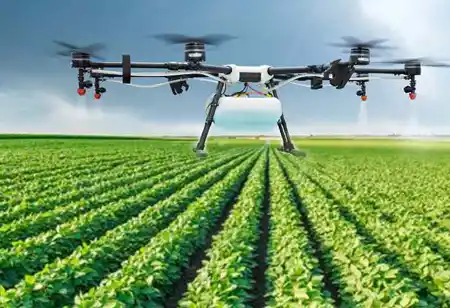Thank you for Subscribing to Agri Business Review Weekly Brief
Enhancing Agricultural Sustainability with Crop Insurance and Satellite-Based Solutions
In the realm of agribusiness, crop insurance stands as a vital shield against the potential financial and production setbacks that farmers may face.

By
Agri Business Review | Thursday, August 10, 2023
Stay ahead of the industry with exclusive feature stories on the top companies, expert insights and the latest news delivered straight to your inbox. Subscribe today.
Agricultural insurance, especially for small farms, provides crucial protection against unforeseen crop losses, ensuring economic resilience. Leveraging satellite data, crop insurance companies can accurately assess crop conditions before and after losses, facilitating more effective risk management and claims processing.
FREMONT, CA: In the realm of agribusiness, crop insurance stands as a vital shield against the potential financial and production setbacks that farmers may face. This protection becomes even more robust when combined with satellite-based solutions, allowing for precise evaluation of crop health and damage.
The Importance of Crop Insurance
Crop insurance extends a safety net to agribusinesses, particularly small-scale farms, safeguarding them against yield reductions and subsequent financial losses. This coverage bolsters economic resilience and shields farmers from the potentially devastating consequences of crop failure. With the security provided by insurance, farmers gain the confidence to explore innovative technologies and strategies that boost production and economic potential.
Diverse Forms of Crop Insurance
Two primary categories of agricultural coverage exist, shaped by the insured object and the types of damage covered:
Multiple Peril Crop Insurance (MPCI): MPCI provides coverage against expenses and price fluctuations arising from natural events, including fires, insect infestations, droughts, crop diseases, and floods. However, this insurance does not extend to infrastructure damage, such as storage facilities or animal enclosures. Farmers must secure MPCI policies before commencing farming to ensure valid claims.
Crop Hail Insurance: This category offers personalized coverage through private insurance providers, focusing on specific events like hailstorms. Crop hail insurance is typically limited to damage caused by a singular occurrence and may not cover broader weather-related threats like frost or drought. It is suitable for farmers who opt out of federal programs or when losses do not surpass the state compensation cap under MPCI.
Empowering Crop Insurance through Satellite Monitoring
Satellite monitoring, facilitated by platforms like EOSDA Crop Monitoring, plays a pivotal role in enhancing the effectiveness of crop insurance by enabling accurate and timely evaluation of crop conditions. Key advantages include:
Precise Field Measurement: Utilizing satellite imagery, EOSDA Crop Monitoring ensures accuracy regardless of field size. Interactive maps delineating research boundaries further enhance clarity, enabling insurance companies to precisely determine the insured area's dimensions.
Production Assessment and Prediction: EOSDA Crop Monitoring provides diverse methods to concurrently assess current and future field productivity. By detecting harvested areas through satellite images and employing zoning, agri crop insurance providers gain insights into potential claims. Satellite technology utilizes the Normalized Difference Vegetation Index (NDVI) to gauge vegetation health and density.
Moisture Monitoring: The inclusion of the moisture index (NDMI) allows for swift identification and prevention of water stress in crops. These dynamic monitoring offers insights tailored to specific crops and growth stages, empowering farmers to target irrigation and moisture management efforts effectively.





